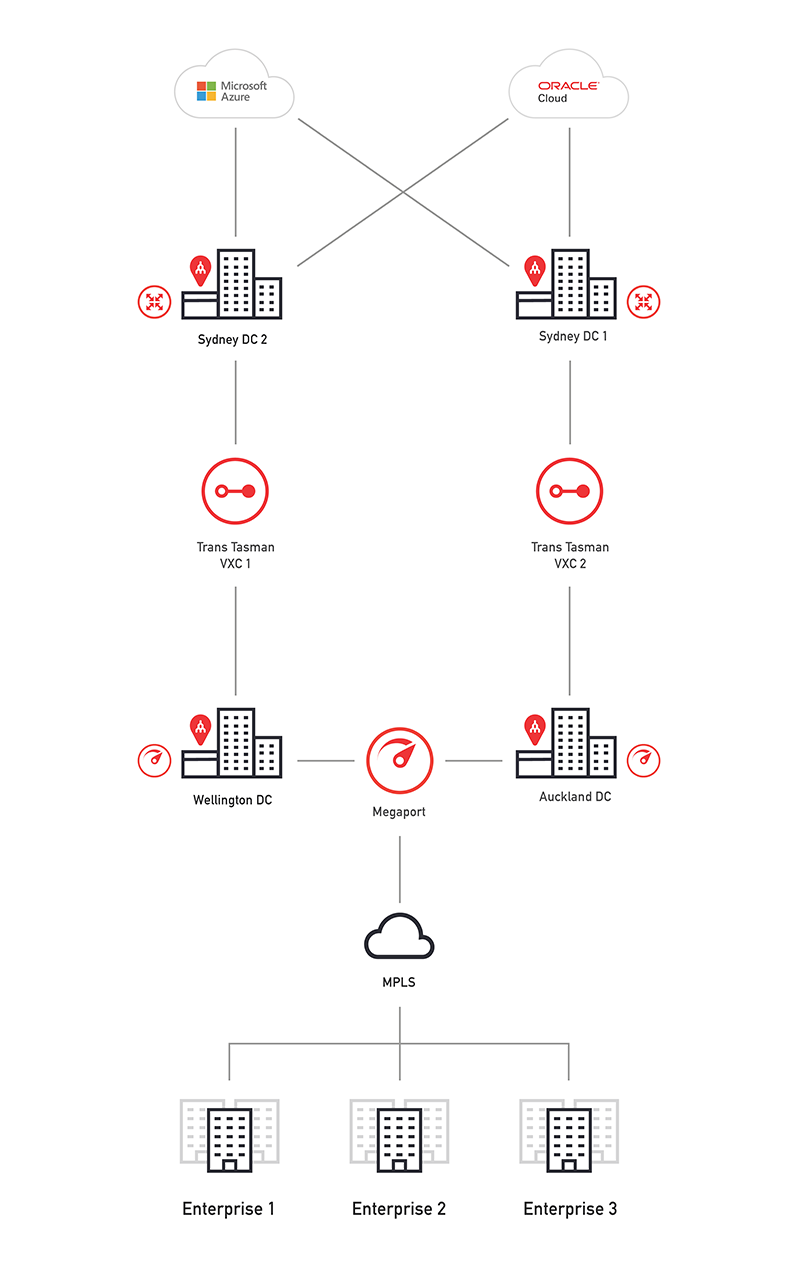Case Study Snapshot
A leading fuel company in New Zealand wanted to increase revenue and loyalty among their customers by pursuing an ambitious, customer-centric digital strategy that included mobile apps, flexible purchasing, and fuel sharing among their consumers. By partnering with Megaport, they were able to modernise their network architecture while improving performance, making this digital transformation possible.
Key Points
- Transformed the digital experience of their customers by adopting Network as a Service (NaaS)
- Improved network performance by moving from public internet to Megaport’s private SDN
- Eliminated unnecessary multiple data trips between their data centres and distant cloud on-ramps through use of Megaport Cloud Router (MCR)
- Improved operational economy by provisioning only the network connectivity they needed, when they needed it
About the Company
Supplying fuel to nearly half the nation’s market, the company’s petroleum products are used by airlines, trucking companies, mines, shipping companies, and vehicle fleet operators throughout the country. The owners wanted to serve their unique market with a personality that matched New Zealand’s national attitude. Their approach was to ‘shut up and listen,’ so they asked people across the country what they wanted from a fuel company. Out of those conversations, the company created a digital transformation strategy that would help them stay relevant to their customers.
A big part of their digital transformation was an emphasis on customer service, with an exceed expectations attitude to earn loyalty from customers. A key component of the strategy was to create a mobile app for customers that let them do things like purchase fuel in bulk when it’s at a good price and share it with up to five other customers, access fuel discounts and rewards, earn loyalty points, pay for fuel at their 350+ service stations and truck stops without leaving their vehicle, and pre-order hot and cold drinks in advance, among other services. Users also can track their carbon emissions and choose carbon offsets that benefit local forests.
Challenge
All that real-time customer service puts strain on a business’s network, and the company’s geographical location only added to the challenges. The company’s local data centres communicate with DCs in another country with on-ramps to Microsoft Azure and Oracle Cloud.
To interact with their Kubernetes containers and Oracle databases required multiple trips back and forth between the distant countries. This approach wasn’t scalable and introduced latency that made their services unviable, especially for interactive database applications. It also didn’t provide the foundation for the multicloud solutions they were considering.
Solution
Megaport’s Software Defined Network (SDN), and particularly its Megaport Cloud Router (MCR), eliminated the need for multiple data trips between their data centres and the distant cloud on-ramps. Two MCRs were set up between their primary data centres and a regional hub in a large metropolis, enabling direct communication between Azure and Oracle. After testing the connections, the company discovered they had provisioned more connectivity than needed, which was no problem with Megaport’s flexible provisioning and billing. Had they provisioned traditional telco connections, they would have been paying for connectivity they weren’t using. With Megaport, they could easily scale or turn on or off what they needed, when they needed it, avoiding unnecessary costs.
Benefits
The company achieved their ambitious digital transformation strategy thanks to their adoption of Megaport’s SDN and MCR, which brought them a number of benefits:
- Fast, secure, and low-latency private network connections provide the bandwidth needed for real-time apps and customer service applications.
- Quick and easy provisioning of just the amount of connectivity needed, when it’s needed.
- Direct connections to public cloud on-ramps through MCR avoids unnecessary network trips and latency hits.
Future Plans
The company is considering an MCR and possibly a VXC to connect their other data centres. Their fleet card system provider recently moved their data centre from Europe to Singapore, so a VXC from MCR to Singapore would substantially improve that connection.

